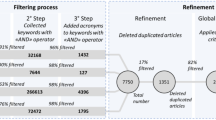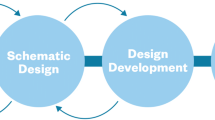Abstract
The objective of this research is the development of an effective design of an assembly line for heaters production by taking into consideration work measurement, line balancing and ergonomic problems. As the assembly line is still not in existence and no data are available, it is quite difficult to evaluate, for each assembly line workstation, the work assignment, the assembly times as well as the effect of ergonomic risks such as musculoskeletal disorders, wrong working postures, etc. In this research, the authors propose a two-step approach. In the first step the authors design the geometric model of the heater and the geometric model of the assembly line by using the CAD software Pro-Engineer. Both the geometric models are then imported in a simulation environment provided by the simulation package eM-Workplace. The simulation model is completed by adding and training human models to perform the assembly operations and is used for carrying out work measurement, time and ergonomic analysis. The second step is the effective design of the assembly line. The authors propose a multi-measures approach (based on the results of work measurement and ergonomic analysis) with the aim of obtaining a different work assignment to each workstation, a better line-balancing and better ergonomic solutions.






Similar content being viewed by others
References
Banks J (1998). Handbook of Simulation. Wiley Interscience Publication: New York.
Chaffin D and Andersson G (1984). Occupational Biomechanics. John Wiley & Sons: New York.
Garg A (1976). A metabolic rate prediction for manual materials handling jobs. Dissertation, University of Michigan.
Joseph BS, Kilduff HR and Bloswick DS (2001). Manufacturing ergonomics. In: Zandin KB (ed) Maynard's Industrial Engineering Handbook. McGraw-Hill: New York, pp 6.55–6.77.
Kharu O, Harkonen R, Sorvali P and Vepsalainen P (1981). Observing working postures in industry: Examples of OWAS application. Appl Ergon 12: 13–17.
Kharu O, Kansi P and Kuorinka I (1977). Correcting working postures in industry: A practical method for analysis. Appl Ergon 8: 199–201.
Longo F, Mirabelli G and Papoff E (2005a). Material flow analysis and plant lay-out optimization of a manufacturing system. In: Proceedings of Intelligent Data Acquisition and Advanced Computing Systems, September 5–7, IEEE: Sofia (Bulgaria), pp 727–731.
Longo F, Mirabelli G and Papoff E (2005b). Techiche di analisi avanzate per la progettazione efficiente delle postazioni di assemblaggio manuale. SdA—Soluzioni Assemblaggio 1: 102–105.
Maynard HB, Stegemerten GJ and Schwab JL (1948). Methods-Time Measurement. McGraw-Hill Book Company: New York.
Niosh Technical Report 81-122 National Institute for Occupational Safety and Health (Hrsg.). Work practices guide for manual lifting. Center for Disease Control, US Department of Health and Human Services, Cincinnati, OH, USA: NTIS 1981.
Rohmert W (1985). Ergonomics and manufacturing industry. Ergonomics 28: 1115–1134.
Schultetus W (1980). Daten, hinweise und beispiele zur ergonomischen arbeitsgestaltung. Montagegestaltung, Verlag TÜV Rheinland Gmbh: Köln.
Scientific Support Documentation for the Revised 1991 NIOSH Lifting Equation: Technical Contract Reports, May 8, 1991, NTIS No. PB-91-226-274.
Siemens AG (1981). Daten und Hinweise zur Arbeitsgestaltung. Korperkrafte: Erlangen.
Waters TR, Vern PA and Garg A (1994). Application Manuals for the Revised NIOSH Lifting Equation. US Department of Health and Human Services, National Institute for Occupational Safety and Health: Cincinnati, OH, USA.
Zandin KB (1990). MOST Work Measurement Systems, 1st and 2nd edn, Marcel Dekker: New York.
Zandin KB (2001). Maynard's Industrial Engineering Handbook, 5th edn, McGraw-Hill: New York.
Zandin KB (2003). MOST Work Measurement Systems, 3rd edn, Marcel Dekker Inc.: New York.
Author information
Authors and Affiliations
Corresponding author
Rights and permissions
About this article
Cite this article
Longo, F., Mirabelli, G. Effective design of an assembly line using modelling and simulation. J Simulation 3, 50–60 (2009). https://doi.org/10.1057/jos.2008.18
Received:
Accepted:
Published:
Issue Date:
DOI: https://doi.org/10.1057/jos.2008.18




